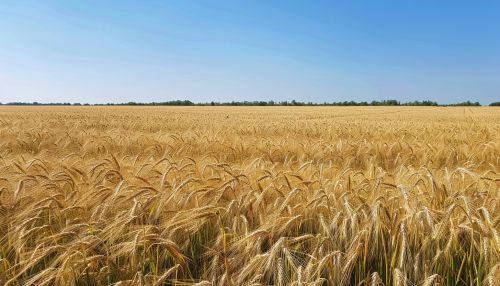Wheat
Introduction
Wheat is a grass widely cultivated for its seed, a cereal grain which is a worldwide staple food. The many species of wheat together make up the genus Triticum; the most widely grown is common wheat (T. aestivum).


History
The archaeological record suggests that wheat was first cultivated in the regions of the Fertile Crescent around 9600 BCE. Botanically, the wheat kernel is a type of fruit called a Caryopsis.
Classification
Wheat is classified in the genus Triticum. There are many species of wheat, with the most commonly grown species being Triticum aestivum, or bread wheat.
Cultivation
Wheat is grown on more land area than any other food crop (220.4 million hectares, 2014). The global average wheat yield in 2014 was 3.3 tonnes per hectare.
Uses
Wheat is used in various culinary dishes and industrial applications. It is a primary ingredient in bread, pasta, pastries, and many other food products.
Nutritional Information
Wheat is a rich source of various nutrients including dietary fiber, the B vitamins and the dietary minerals manganese (143% DV), phosphorus (71% DV) and selenium (169% DV).
Diseases and Pests
Wheat crops are susceptible to various diseases and pests, including Fusarium head blight, leaf and stem rust, and wheat midge.
Genetic Modification
There has been some research into the genetic modification of wheat to make it resistant to pests, diseases, and environmental conditions.
Environmental Impact
The cultivation of wheat has various impacts on the environment, including the use of water resources and the emission of greenhouse gases.
